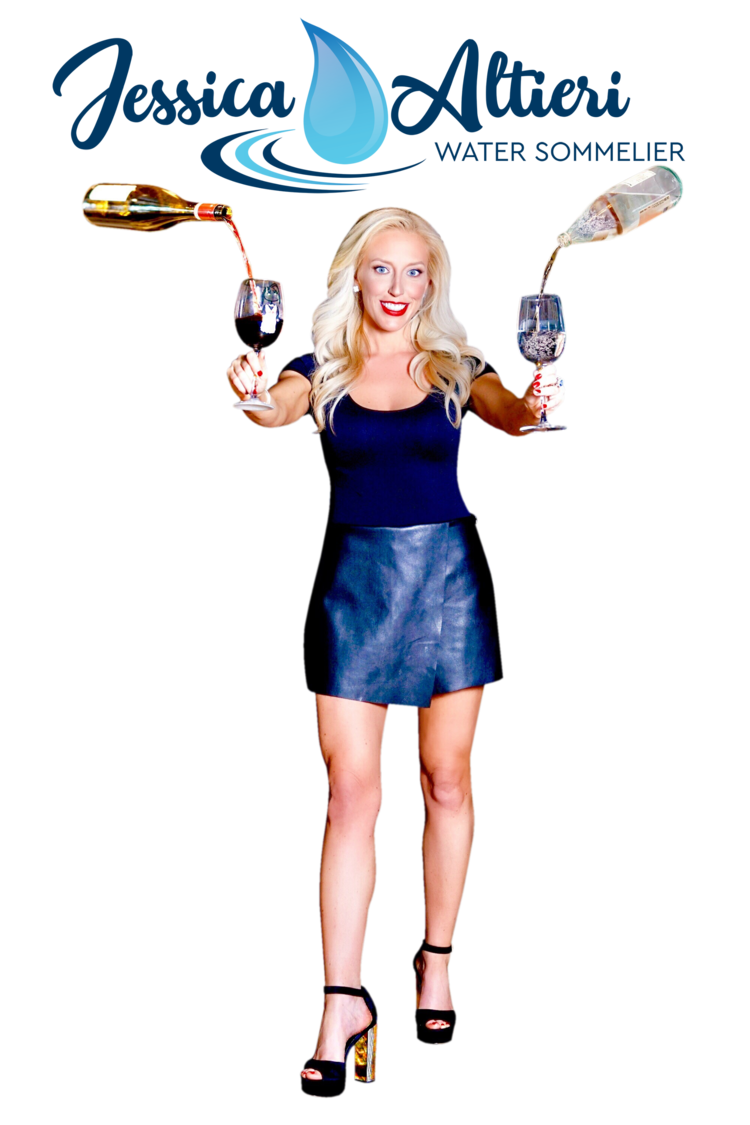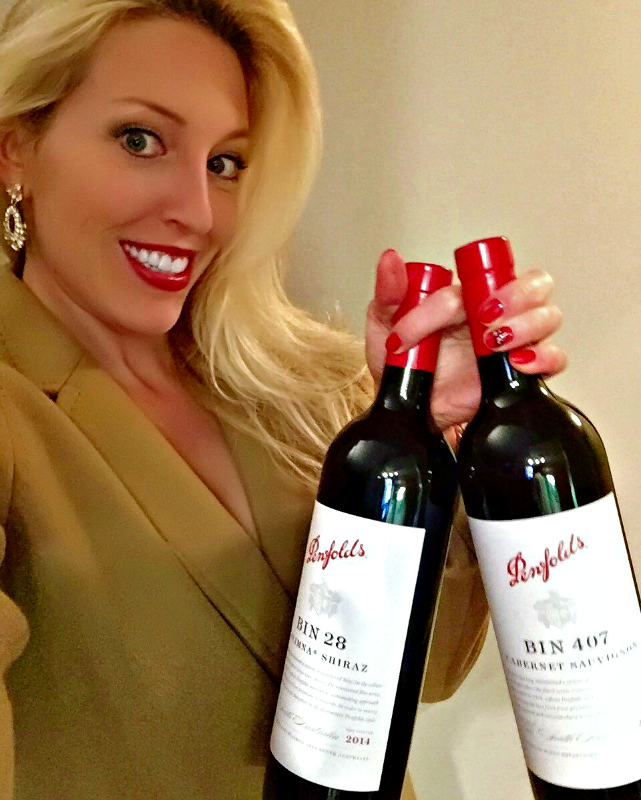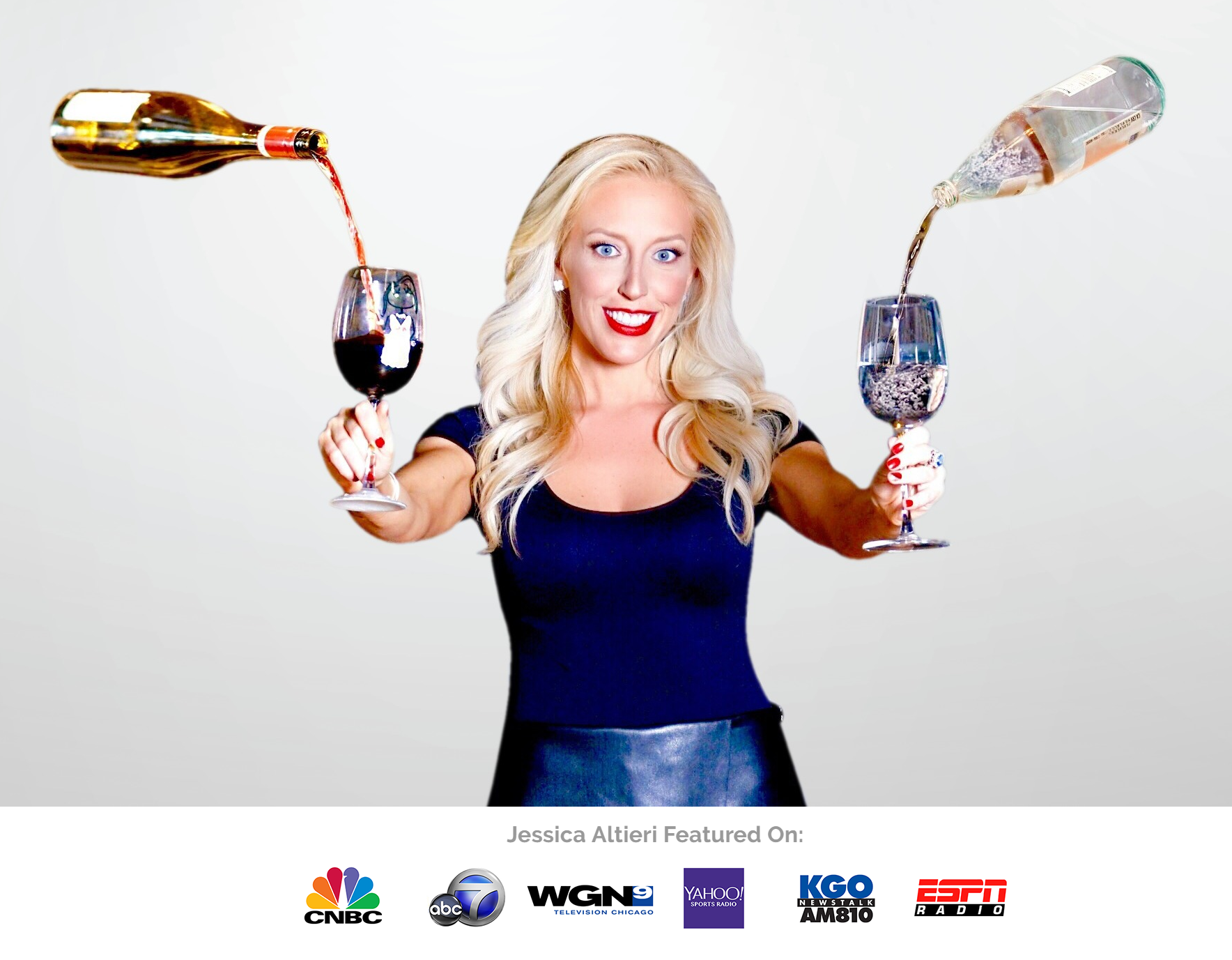By Jessica Altieri, Internationally Certified Water Sommelier
The market for bottled water remains impressively strong, but the real action—and opportunity—is now found in the category of premium waters.
Reports from Business Insider, Euromonitor International, Beverage Daily, and a host of others indicate that significant profit-potential exists in the premium bottled-water segment.
In April 2019, I delivered a presentation explaining why affluent and non-affluent consumers alike are increasingly clamoring for premium bottled water. The following information reiterates and enlarges upon the points I made, and suggests ways that you can successfully leverage the demand for this luxury product.
WHAT IS ‘PREMIUM’ WATER?
Basically, bottled water qualifies as premium if it possesses one or more exceptional qualities—actual or perceived—that set it apart from mainstream products and justify a price far exceeding the market average.
One defining characteristic of premium water is provenance. Water sourced from an exotic or far-off-the-beaten-path location (such as a spring atop a towering mountain or a wall of ice on the face of a ruthlessly difficult-to-access glacier) will allow it to be classified as premium. This is particularly true when the geologic composition of the source naturally infuses the water with a distinctive mineral content that contributes exceptional flavor, function, higher-level purity, or some combination of these.
Source can also help endow water with a compelling image—essential for convincing consumers that the product is worth the high dollar-amount printed on its tag. However, a suitably posh image can be created not only by provenance but by placement: stocking a particular brand of bottled water exclusively in upscale shops and restaurants can cause it to be associated with a luxury lifestyle or luxury experience. Similarly, a suitable image can be fashioned by marketing campaigns and social-media outreach that tell a unique, fascinating backstory about the product.
PREMIUM WATER BY THE NUMBERS
Beverage Daily reports that $16.5 billion worth of premium bottled water was sold worldwide in 2017 (the most recent year for which figures were available). That sum represents a 48-percent gain since 2012.
It’s not simply that the wealthy consumers who all along have bought premium water are now drinking more of it. It’s that consumers lower down the economic scale also are purchasing the product and increasing their consumption. Indeed, premium-water consumption between 2012 and 2017 grew 26 percent, In 2017 alone, consumers drank nearly 3-billion gallons of it.
Seventy-two percent of the world’s premium water market is situated in Western Europe. But it’s in North America where the greatest growth can be observed–13 percent per year. By comparison, Europe grows at just 3 percent (the Middle East and Asia each grow at 6 percent).
As to pricing, consumers pay a global average of 150 percent more for a bottle of premium water than they do for one not labeled as such. However, in markets where consumers most enthusiastically prize premium water, the price of a bottle averages 800 percent more than that of non-premium water.
SEVEN KEY TRENDS DRIVING THE THIRST FOR PREMIUM
There are seven exploitable trends driving the current success of ultra-premium water, expanding it from a niche product to one with substantial mainstream appeal.
❶ PREMIUMIZATION
More consumers are making more money than they have in quite a while. As a result, they possess an abundance of disposable income. Consequently, more of them are freely spending on products they might before have hesitated to purchase. Premium water is one such example. Newly minted high-net-worth individuals typically employ some of their available cash to trade up—that is, to acquire better, more expensive versions of goods they customarily use; bottled water, for example. Less affluent consumers are engaged in much the same thing—the difference being that they tend to offset the cost of up-trading by buying fewer of the products or services to which they feel little or no emotional attachment (or engagement).
❷ HYDRATION
Consumers show no sign of becoming less mindful about their health. A facet of health receiving greater attention is hydration.
According to Datamonitor, “[c]onsumers are more aware than ever of the health benefits of staying hydrated [and that] drinking more water is one of the key lifestyle changes they’ve made to improve their health.”
Datamonitor adds that fully one-third of consumers pay a moderate amount of attention to whether they're adequately hydrated throughout the day. Thirty-one percent give it a great deal of attention. And 21 percent are fully invested and impassioned. Altogether, 85 percent of consumers place the matter of hydration near or at the forefront of their thinking. With ever-growing frequency, these health-conscious consumers see premium water as an excellent source of hydration due to its actual or perceived functional benefits. Thus, luxury positioning of the product does not deter them, but in fact adds value and thereby helps lead to a purchase decision.
❸ CHOICE EDITORS
Consumers increasingly seek (and find) tools to navigate a sea of product choices that once seemed overwhelming. They also are increasingly willing to use those tools to extensively educate themselves about a product’s features, benefits, and reputation ahead of making a decision to buy. These tools, coupled with the spread of internet access, enabled water to evolve from a generic product to one that is branded and, now, to one that exudes luxury.
Growth in internet access has been the key to reducing information anxiety and facilitating connections with choice editors (persons or services/platforms that help narrow the options in order to simplify consumers’ decision-making processes). In 2000, the number of adults accessing the internet at home via broadband was less than 5 percent. Of those relative few, the number saying they found themselves overwhelmed by the abundance of information sources stood at about 60 percent. But just five years later, adults with online access at home jumped to approximately 35 percent, while those complaining of being overwhelmed by information-source availability dropped to around 40 percent. Today, the vast majority of adults have home access to the internet via broadband and few are those who disagree with the statement "I always know how to get the information I need to make decisions."
❹ NEW LUXURY
The demand for luxury is growing, but the defining traits are evolving: from merely owning the product to the experience of using it; from simply knowing what to buy to knowing why to buy it. Still, it is useful to bear in mind that luxury categories always exists, no matter whether the economy is good or bad. There is always demand for luxury products. However, the demand is broadest and most robust in times of plenty, as is the case today. In the past, luxury was embodied by things material—a yacht, a diamond ring, a bespoke silk suit. Today, luxury is also embodied by things experiential, both physical and emotional. Premium bottled water is both a material good and a physical/emotional experience. It is new luxury.
With regard to experience, feelings play a significant role. More and more, though, the way consumers feel about a product is shaped not entirely by their actual experience with it but, rather, by their knowledge of it. Knowledge can be gained from a variety of sources. Social-media friends and celebrity influencers are among the key avenues by which consumer knowledge is spread. Another is backstorytelling. For example, one of the world's most expensive coffees is kopi luwak, which retails at up to $100 for a single demitasse. The extreme challenges involved in producing it justify kopi luwak’s astronomical price. But it's the backstory that injects the necessary cachet—and because of it, consumers seldom blanch at paying so much for that tiny cup (the backstory here is that this coffee comes from a rare bean eaten and partially digested by an Asian tree cat whose digestive system’s enzymes become trapped in the beans and are believed to confer exceptional health benefits on humans).
Consumer age is another factor in determining luxury designation. For example, the younger a consumer is, the more he or she will prefer to spend money on experiences instead of material objects. Seventy-six percent of Millennials feel this way—and they are poised to soon become the largest group of consumers.
❺ GLOBAL PERSPECTIVE
In the U.S., burgeoning international influences combined with a high degree of openness have led Millennials to embrace products and experiences from around the world. A survey by the Yankelovich Monitor finds that 60 percent of Millennials agree with the statement that “in the last 20 years, the really interesting products and ideas are those that we bring over from other countries or cultures." Not quite 40 percent of Gen-Xers share that sentiment, as do barely 30 percent of Boomers, the survey reveals.
The lesson is that highlighting international provenance is always a good idea. Consider that Barkley's Study of American Millennials discovered young consumers are massively in favor of sampling all that the planet offers. In other words, comparatively few have tastes that run toward the exclusively provincial or domestic. Therefore, premium waters sourced from faraway places can expect to receive a warm welcome from Millennials, first and foremost.
❻ CREATIVITY
More than any other generation, Millennials value creativity—not only as a means of self-expression but as a tool to navigate the constantly changing world around them. Creativity as a brand value, expressed through design or story, will make a water even more compelling. We have long witnessed this in sales of beer, for example: beer brands seen as more creative are taking drinkers from brands seen as less creative; craft beer has averaged 12 percent growth per year for the last 10 years, in significant part because of the creativity associated with many of its brands.
❼ FEMINIZATION OF CULTURE
Women today are less likely to be influenced by men. The reverse is true as well: men are more likely to be influenced by women. A partial result of this trend is that males are increasingly participating in traditionally female activities and making purchases once associated solely with women. Ultimately, male openness to female influence enables even greater creativity, expanding the audience for more “feminine” designs—and for premium bottled water.
HOW TO LEVERAGE THE TRENDS
Clearly there are opportunities in the premium bottled-water category. To take advantage of those opportunities, you should begin mapping out an appropriate game plan.
My recommendation is to start by reviewing your existing water programs.
Look for aspects of those programs that would support the introduction of premium waters. If you can find none, then create a luxury water program from scratch.
In any event, support your introduction by developing a program to educate consumers about the premium waters you offer. The more they know about their choices, the more inclined they will be to say yes when asked if they would like to experience one of your very expensive bottles.
Include in your education program an inward-facing element to train your staff. You will want them equipped to ask of consumers the right questions the right way in order to encourage sales.
Also, if you plan to conduct a premium-water program in the context of a fine-dining establishment, you may find it advantageous to make single-glass servings and bottles of premium waters available with existing wine pairings.
The goal is to make premium water your new beverage channel for generating more revenue in 2019. I am confident you will find that premium water is like a rushing, rising river in that it is unstoppable and quite capable of overflowing the banks.
For more information, contact Jessica Altieri at: jess at jessaltieri dot com




















